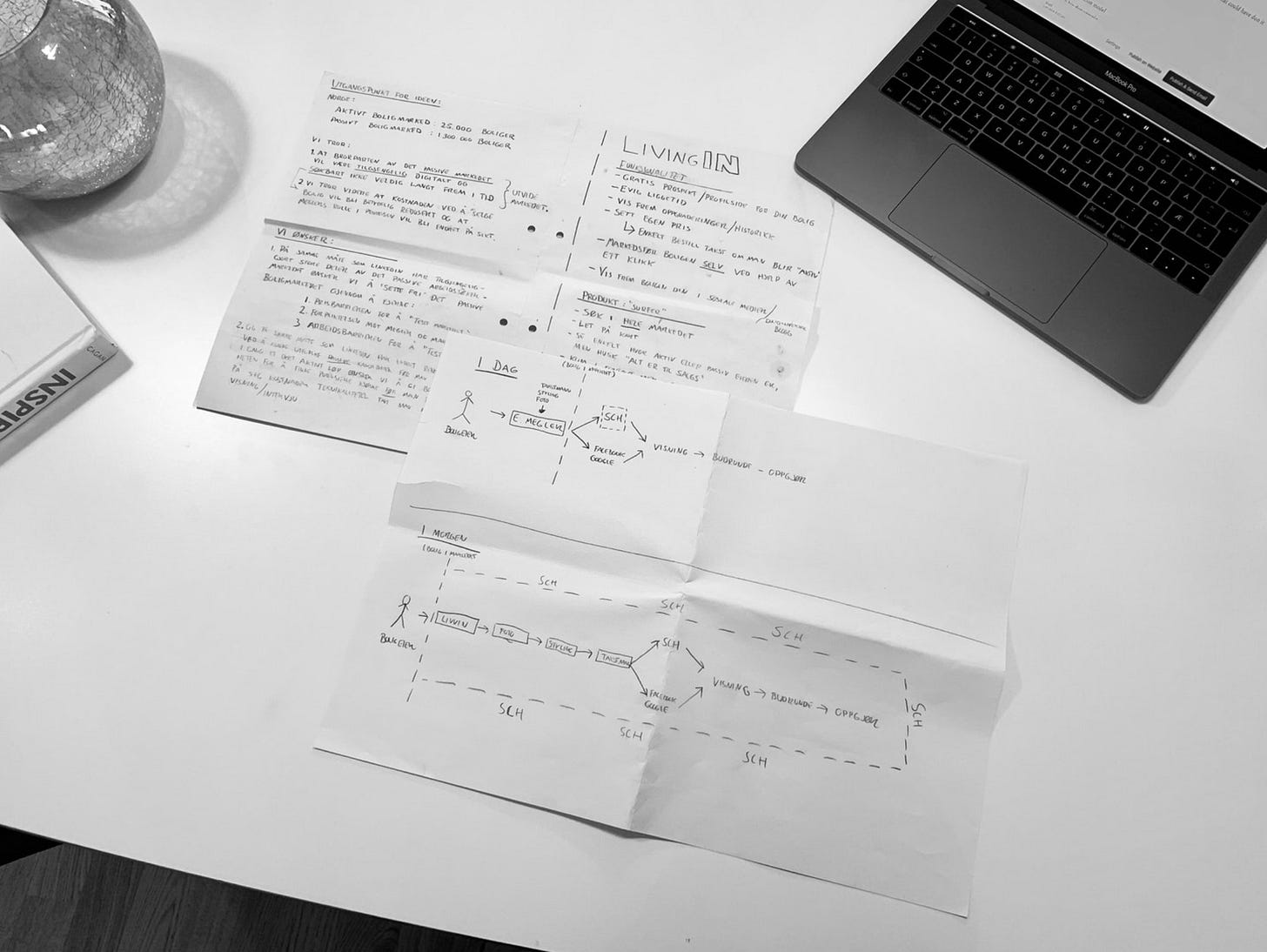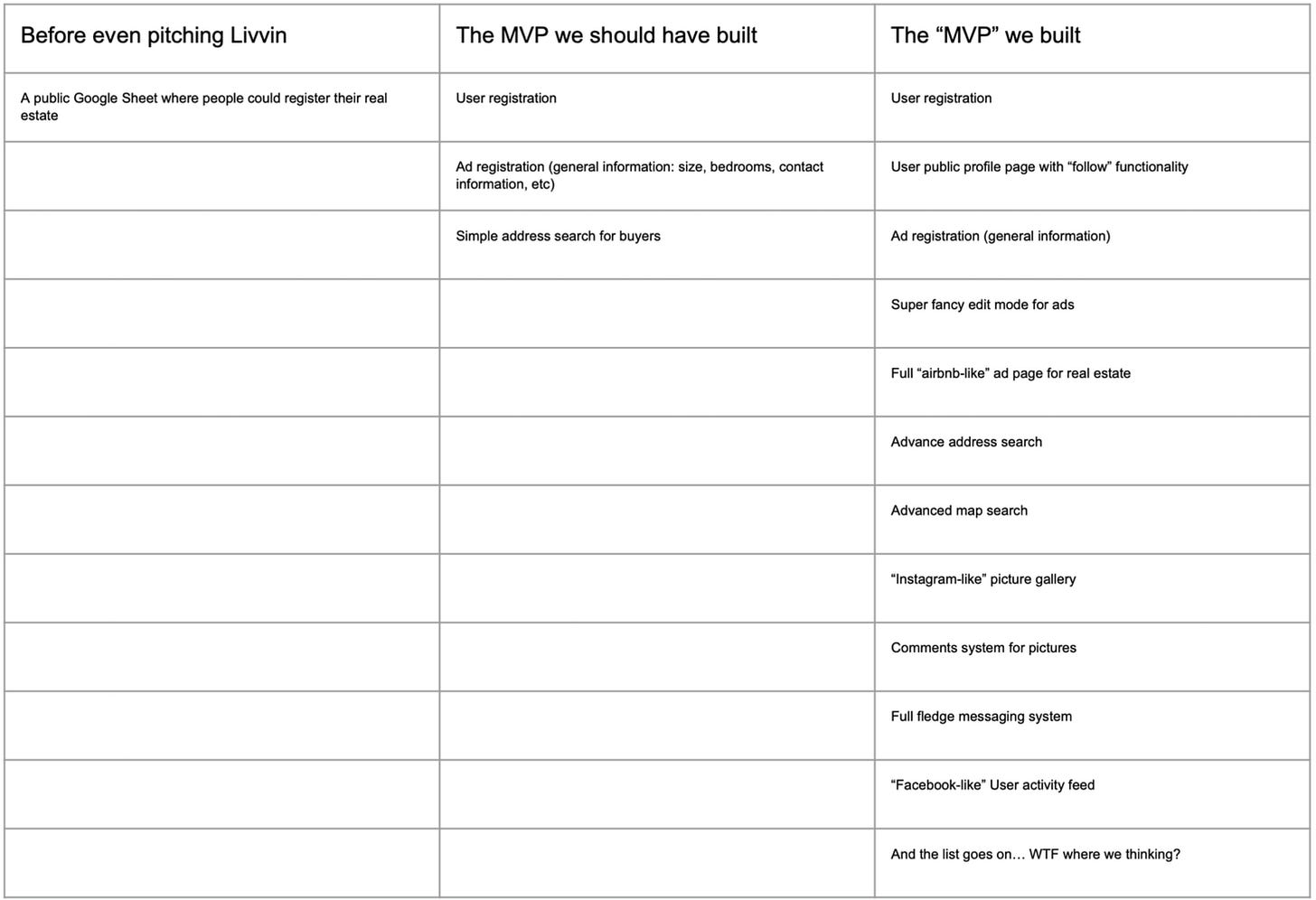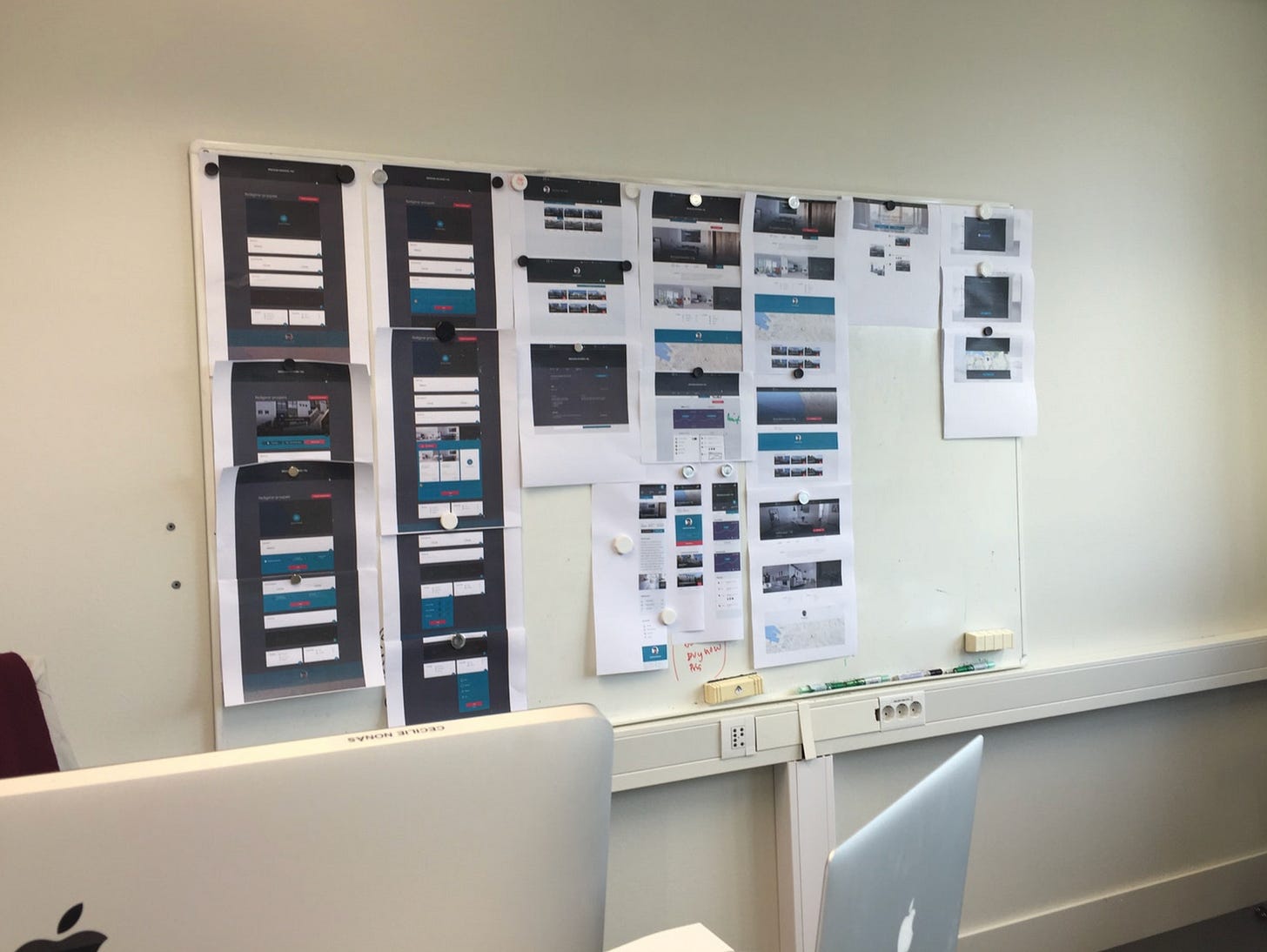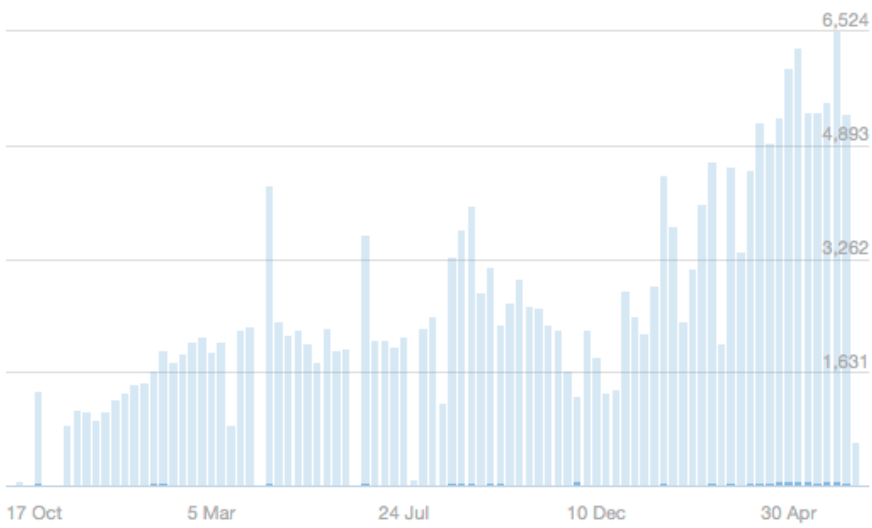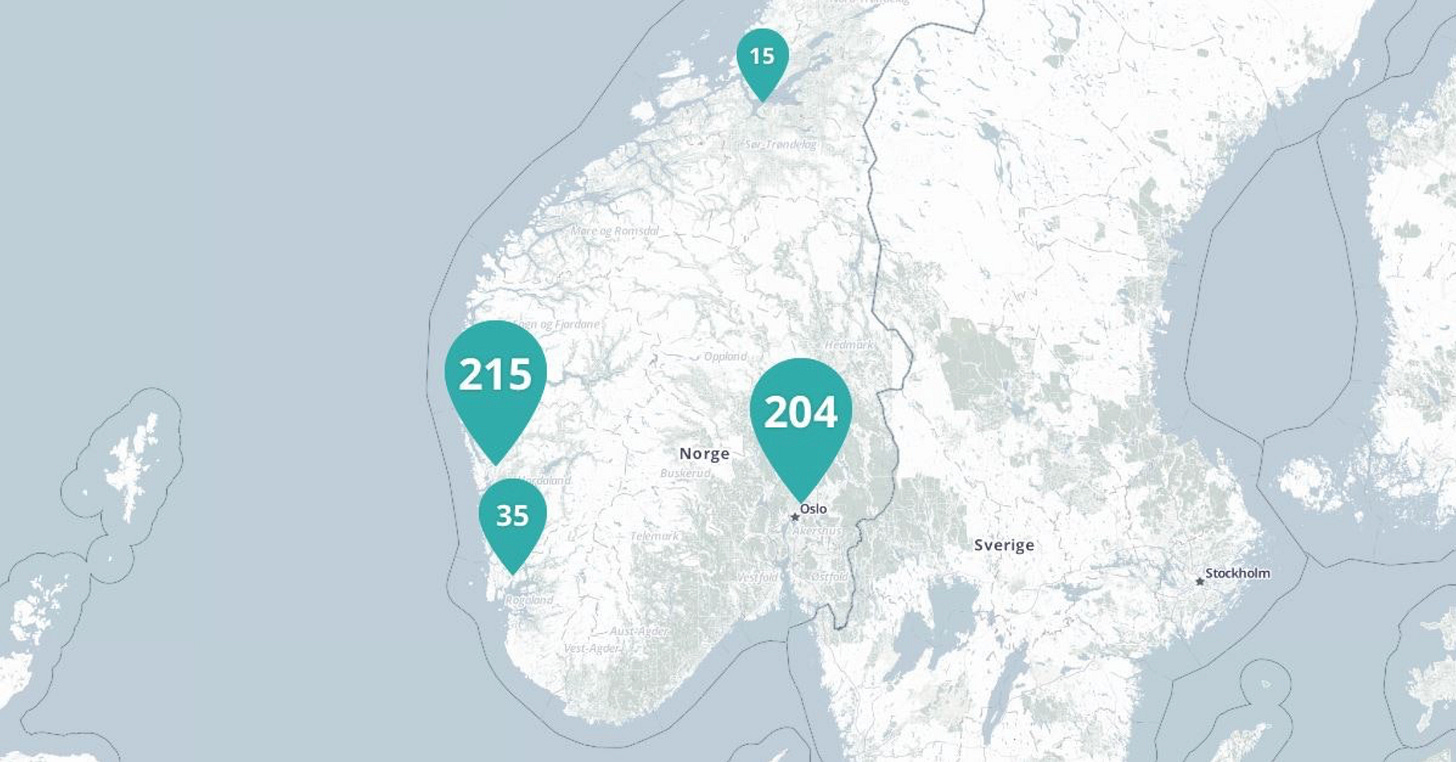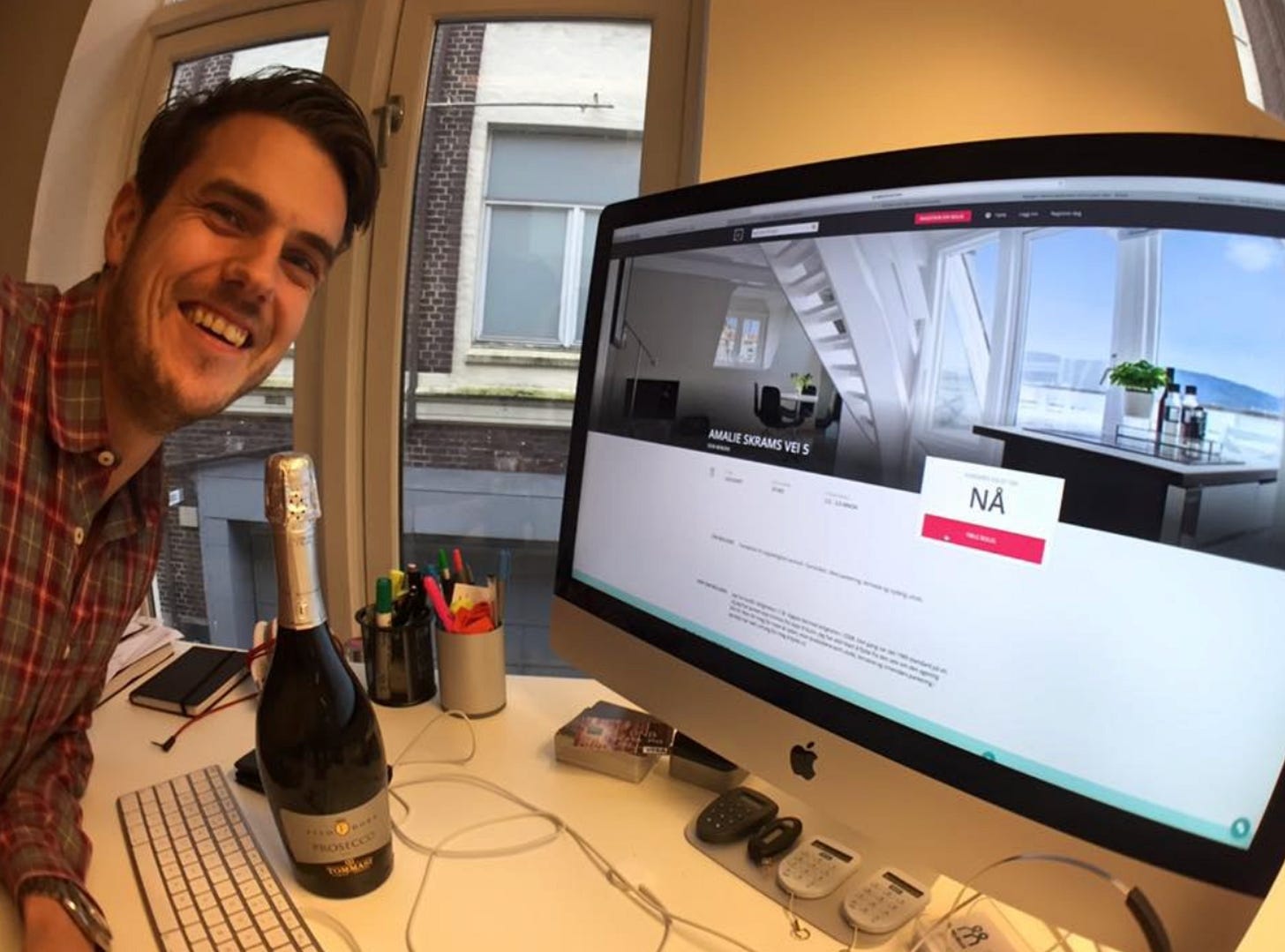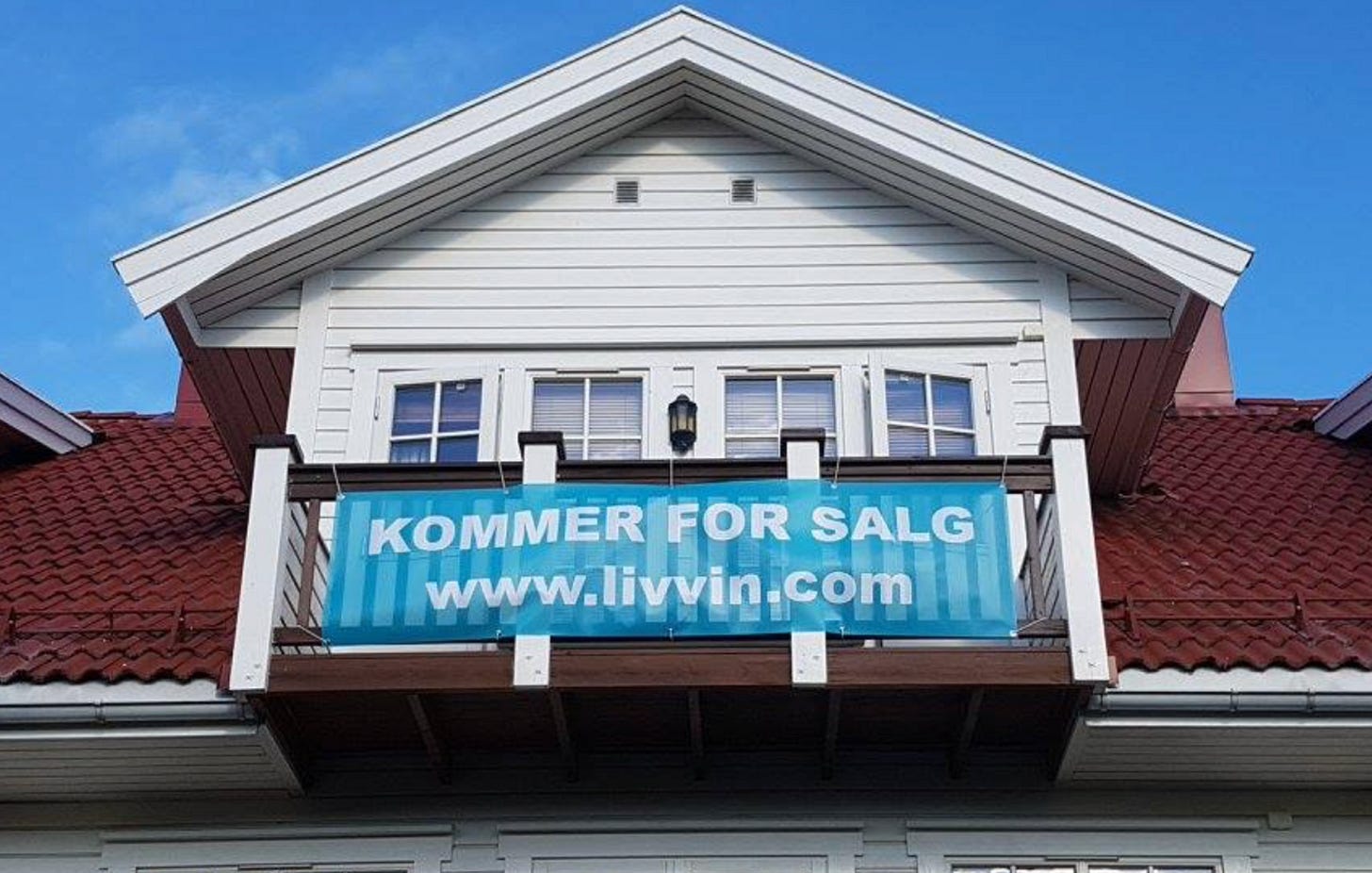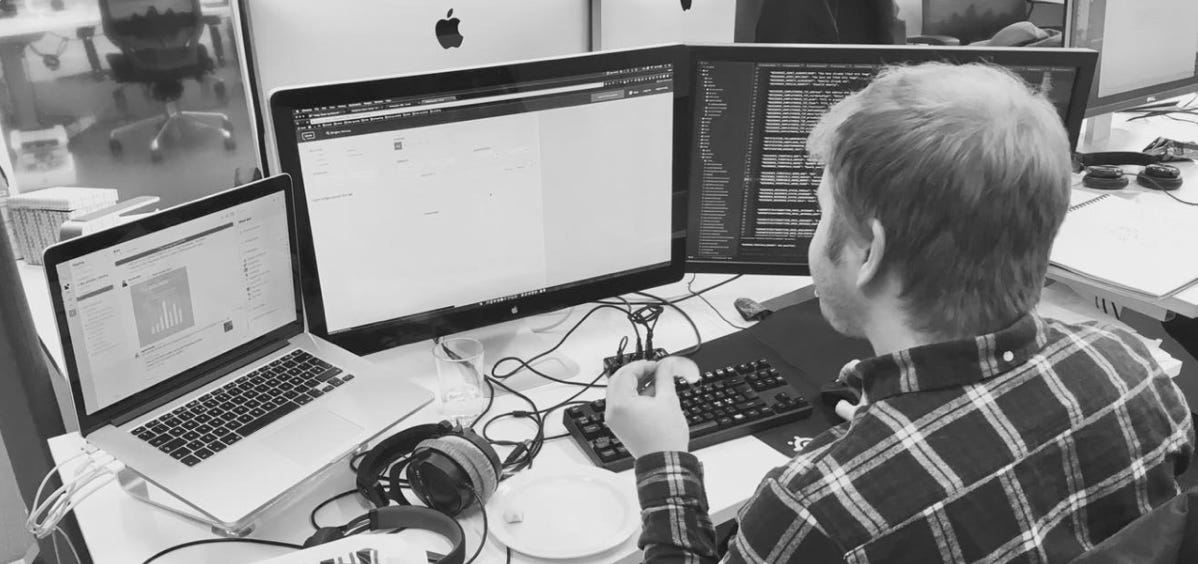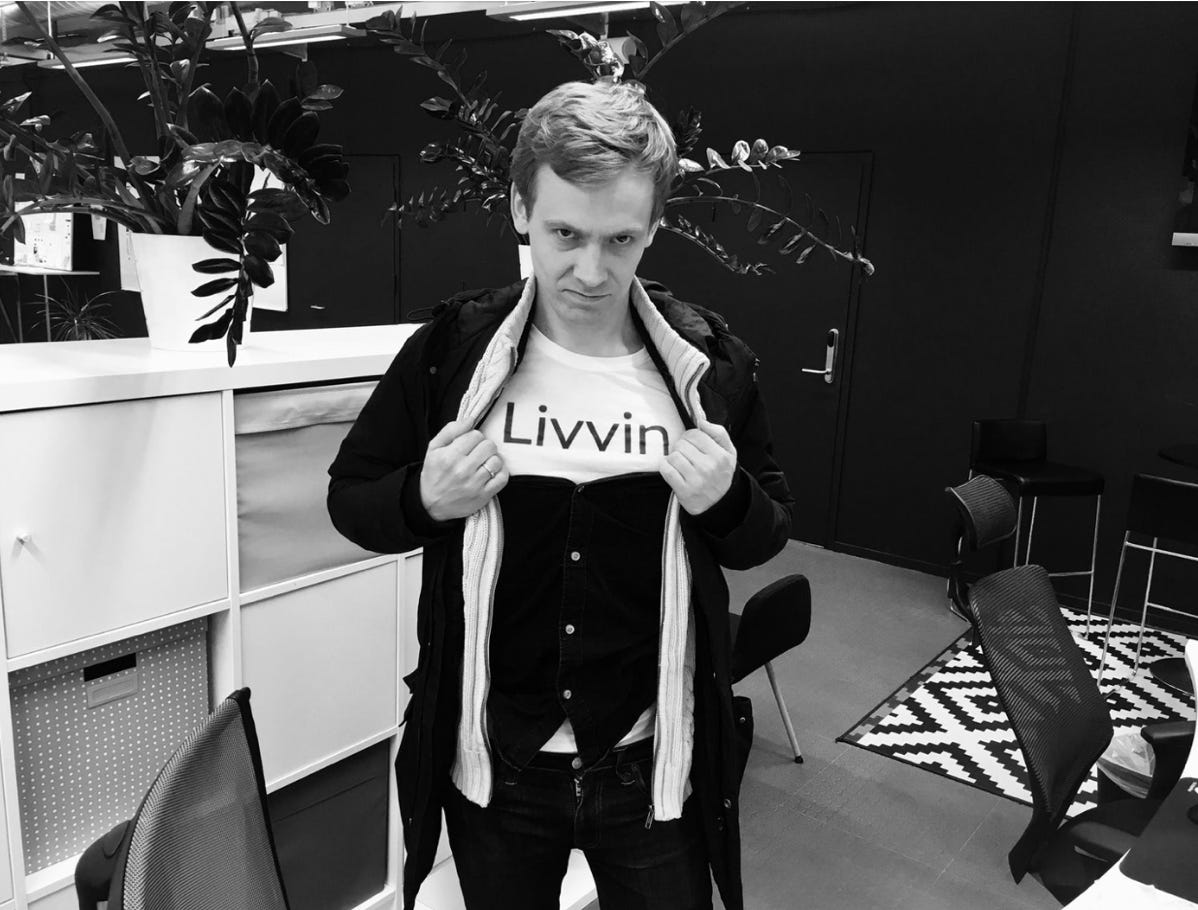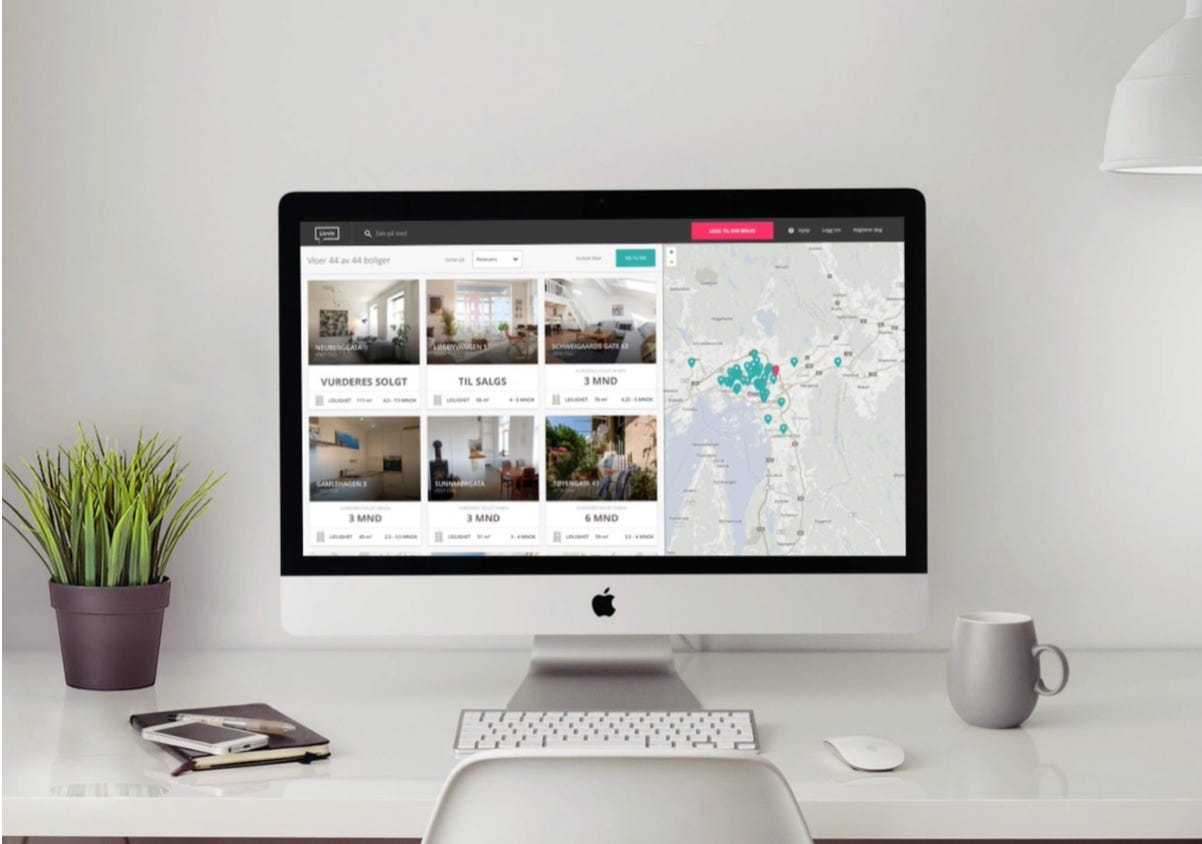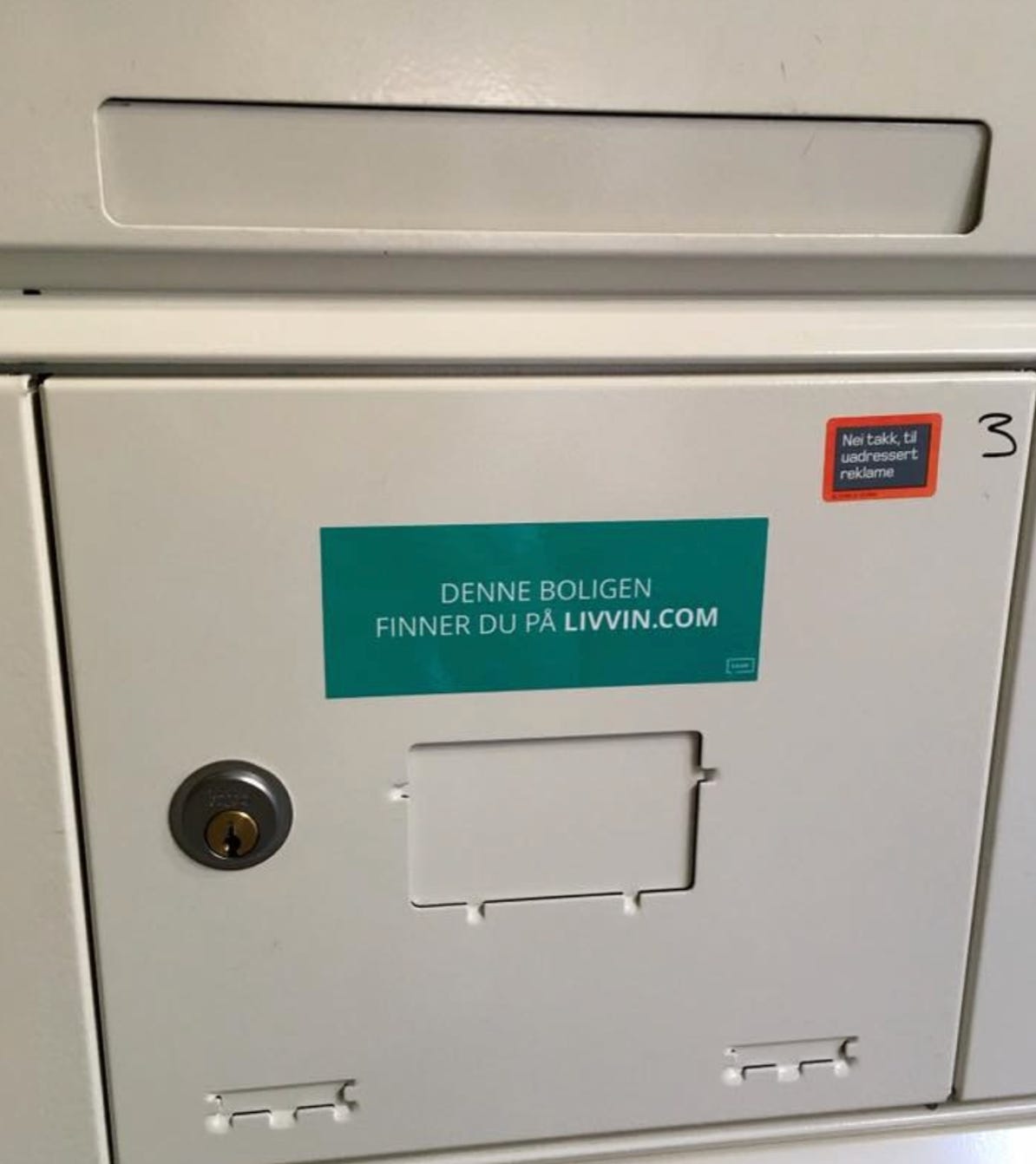The story behind the idea - A result of founder's pain
The idea for Livvin came in 2014 when my neighbor sold his apartment for four million Norwegian kroner. My apartment was 10 square meters bigger than his and had a balcony and a parking space, neither of which his apartment had. At the time I thought my apartment was worth around 3.5 million Norwegian kroner so I got excited and decided immediately that I wanted to sell mine as well. I thought I would be able to get at least 4.5 million Norwegian kroner since mine was bigger and had more amenities. The result: No one came to look at the apartment, and no one ever bid for the apartment. I felt terrible. The “oh snap” moment! Then some weeks later I meet my new neighbor and I told him that I had tried to sell my apartment right after he bought him, and that mine was bigger (and better). That resulted in him feeling terrible. If he had known that I considered selling he would have bought mine instead. That got me thinking:
There are a lot of people that are planning to sell their real estate in the near future (three to six months)
There are a lot of people that are looking to buy real estate right now. This group is not able to see what real estate that is coming for sale in the next weeks and months, often probably leading to buyer’s remorse because something better shows up right after the contract is signed.
The question was then: Are there any value propositions that could be targeted at real estate owners so that they would be willing and wanting to share when they are planning to sell? If we could find one we would make it possible to look into the future of the real estate market and that would be a great value proposition for people looking to buy real estate.
Long story short: after contemplating for a while with my colleague at the time, Bård Skaar Viken, we decided that there was a good chance that a pre-market real estate marketplace would make sense. A marketplace where real estate owners could gather interest for their real estate in the weeks, months, and some cases years before they put it up for sale. We started scribbling on some papers (seen in the picture below) one weekend I may 2015 and decided we needed to do this.
The product today
After 3 major iterations from 2015-2019, Livvin has become super easy-to-use marketplace for real estate that is coming for sale. It takes 30 seconds for an owner to register his or her real estate and the system immediately matches the property with potential buyers looking in the respective area. You can see the onboarding flow in the video below.
The numbers for 2016 - 2019
Livvin is doing great! In terms of traffic in 2017, we had 75.000 monthly active users and in 2019 the best weeks topped out at 375.000 monthly active users (+260%). Keep in mind, this is in a country with 5 million inhabitants. In volume, we added 5-10% extra real estate to the traditional real estate market in 2017 and in 2019 we added 20-35% extra real estate to the market depending on the time of year. Livvin extends the length of the market by a considerable amount in other words.
From 2016 - 2019 our NPS score started at 25 and ended at 47 in 2019.I strongly believe that the insight Livvin gives real estate buyers makes them able to make better buying decisions. And on the other side of the market also helps real estate sellers increase the chance of finding the (right) buyer who is willing to pay that little extra for the right real estate. Five biggest product lessons learned enough with the bragging, we made a lot of mistakes. I made a lot of mistakes. Livvin could have been both bigger and more profitable by 2019 than it is. These are our biggest mistakes. And I as a founder and GM take total responsibility for all of them!
We built an MVP that was not even close to an MVP
I had read all the “right” books and all the blog posts about product development when we started Livvin. I even held talks on how to do product
development before starting Livvin. Still, we did the biggest mistake of them all when we launched the first version of Livvin. We built something that we thought was an MVP but was not even close to an MVP. The diagram below shows what we should have built and what we did build.
I have reflected a lot on this. Why did we do this huge mistake that probably cost us somewhere between 100.000$ - 200.000$ (building and then removing)? My conclusion at this point in time is that I believe that we fell in love with our solution and more or less forgot to validate the problem. We were so convinced that people would love our product, that we thought that we might as well just build the final solution right away. Ouch! As the design below shows, we wanted every feature possible on day one.
We had no retention model for the first year
No need for a retention model when people love your product! They will test us once and just love it right away and come back the next day! Right. Again, we were so much in love with our solution that we decided not to prioritize a retention model into Livvin. As a result, we had to “buy” the same user several times through marketing instead of using a built-in and free retention model to do the same. Below you can see the number of daily retention e-mails we sent from the day we finally implemented a model.
We started off with a way too big target group
Again, too confident in our own product “everyone wants to see what is coming for sale”, and “everyone is interested in real estate”. Instead of targeting a small part of a city and becoming thick (market thickness— to bring together a large enough proportion of potential buyers and sellers to produce satisfactory outcomes for both sides of a transaction.) in a small market we went national on day one. Targeting everyone.
This also leads to a lot of “wrong” users visiting your site. This is not only a
waste of money but from a product perspective, it is very dangerous. When you get user feedback from the “wrong” users you very quickly end up making wrong product backlog prioritizations. Which in turn sends your product off in the wrong direction.
Decide on as small as possible target group, make sure they are the “right” kind of users, and learn from them. Make them as happy as possible, then start expanding from there. Cost of failure: somewhere between 50.000$ - 100.000$
We thought we could do creatives ourselves
When a founder and GM (me) decides that he or she can make the creatives him or herself it's without any background in creative work it is time to take your money and run. The creatives that I created and used as marketing on Facebook and in programmatic advertising looked so bad that I am not even going to show them to you.
But I beg you to trust me on this. Creative work is a field that needs to be respected and valued, both in terms of budget, most important in terms of the value it brings to the perception of your product.5. We did a lot of vanity development in the first three years you have been looking at your product day in and day out for the last couple of months, maybe years, and you are getting really tired of that same “old” design. You are in fact so tired that you open up Slack and mention all your designers and front-end developers: “We need to freshen up our design! Right now!” Sounds familiar? It does for me. I have countless examples of situations where I as a founder and GM have used hundreds of valuable hours of my team's time “freshening” up our design just because I am tired of looking at it. Not one user has told me that the design needs love, and I have no analytics to back it up. Only my good old vanity. I want my product to feel fresh to me.Cost of failure: somewhere between 100.000$ - 150.000$. Read how to avoid vanity development here.
Thank you Livvin
It feels like a breakup and I will miss you and the people that helped to create you! But you are in good hands at Finn.no and I think that you will blossom in that environment. There are a lot of good people there. I will be moving on to Otovo, but I will visit you every day! Trust me. People that need to be recognized thank you for both support, inspiration, and direct contributions (start, during, and end) Bård, Alexander, Siv, Jon Helge, Oskar, Sturle, Silje, Thomas, Christian HH, Jørgen, Ørjan H, Karl, Eirik E, Phillipa, Jarle, Frode Å, Frode H, Carl E, Cecilie, Lene, Thomas, Susanne, Tobias, Hilde S, Caspar, Karl, Kelly, Siv T, Ørjan H, Kaija O, Ørjan K, Petter N, Tobias N, Roger O, Hege R, Hogne S, Christer H, Christian S, Andreas T, Børrea, Ørjan J, Sindre Ø, Eirik Aa, Borna, Henrik L, Andreas DL, Christer N, LUS and the endless list of great users helping us with user feedback and the like.Some memorabilia from 2015 -2019
Some memorabilia
Our first user!



